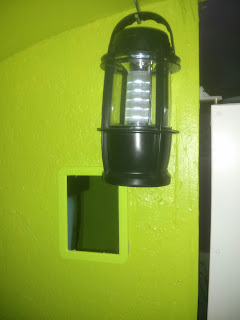The plan is to put four bars on the right hand door. That will have to wait a while though as at the moment I am incredibly busy with work.
Speaking of work, I'm learning to drive a full sized school bus. The course is free and I get paid to work as a bus aide which gives me the opportunity to observe an experienced driver at work. Over the last week my alarm has been going off at 4AM and I've been arriving at work at 5:30AM in time for a 5:45AM start. From 6AM to 8:45AM I'm on a school bus. From 9AM to 11AM I'm on the road practicing in an official school bus. From 11AM to 1:15PM I'm out to lunch. From 1:15PM to 4:45PM I'm out on the bus as an aide. At 5:20PM I'm back home, exhausted. Needless to say, school busses have little to no air conditioning. Thus, it's very dehydrating and is essential to bring water to drink on the bus.
The course thus far is basic manovering. Starting off, stopping, picking up passengers, dropping off passengers, emergency pull overs, railroad crossings and turnabouts. It's all quite complex and doesn't apply completely to driving my own bus but it is very helpful.
Starting procedure
- Walk the interior of the bus, checking for sleeping students, vandalism and critters then raise the out of use flag to signal the bus is in use.
- Sit in the driver's seat and set the seat, steering wheel and mirrors to suit you.
- Check the handbrake is on and the gear lever is in neutral.
- Start the engine, keeping the brake pedal covered.
- Check gauges. Fuel - sufficient for the trip, battery 12-14 amps, oil pressure 20-65 PSI, air pressure at least 100 PSI, engine temperature below 190F.
- Put the bus in drive and press the accelerator gently, thus testing the parking brake.
- Check the door is closed.
- Check passengers are seated.
- Check mirrors
- Drive off.
And that's for starting and does not include the walk around and inspections done as part of the full CDL test!
Stopping procedure
- Hand brake on
- Gear selector into neutral
- Wait 2-3 minutes then turn off the engine
- Remove the key from the ignition
- Empty the air tanks
- Walk the bus to check for vandalism and sleeping passengers.
- Set the out of use flag
Then we get to the actual driving bits which are a lot more complex. I'm so glad to be doing this course. It really has built my confidence in driving such a big beast.
























